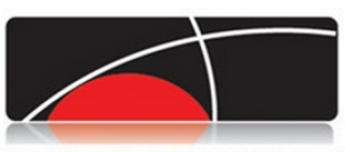Home | About OC | Continuing Education | Course Schedule | Registration | Accommodations | About Dr. Chan | Study Club | Doctor Education | Patient Education | Vision | Research Group | Science | Orthodontics | Laboratory | Dr. Chan’s Articles | GNM Dentistry | Contact Us

SUFFICIENT SCIENTIFIC LITERATURE & STUDIES VALIDATING K7 ELECTRO INSTRUMENTATION
- Parameters of Physiologic Health: Post TMJ Treatment
- Measuring Technology Passes the Validity and Reliability Criteria
- Myotronics K7 EMG are Safe, Effective for the Diagnosis of TMD Patients – No Longer Investigation
- 3 Criteria for Scientific and Clinical Validation
The American Dental Association’s Council on Scientific Affairs has awarded surface electromyography (SEMG), Computer Mandibular Scanning (CMS), and Sonography its “Seal of Acceptance”, as diagnostic aids in the management of temporomandibular disorders. (Report on Acceptance of TMD Devices, ADA Council on Scientific Affairs, JADA, Vol. 127, November 1996).
“The ADA Council on Scientific Affairs Acceptance of K7/EMG Electromyography, K7/CMS Jaw Tracking and K7/ESG Electrosonogram is based on its findings that the products are effective for measuring physiologic or anatomic parameters of the temporomandibular musculoskeletal complex, when used as directed.” June 16, 2005.
Many investigators have confirmed the safety, efficacy and value of surface electromyography for assessing RESTING and FUNCTIONAL status of muscle. There is a broad body of literature that supports the physiologic basis for using surface EMG as an aid in assessment of muscle function/ dysfunction. (Moyer, 1949; Lippold, 1952; Perry, 1954; Bigland and Lippold, 1954; Jarabak, 1956; Perry, 1957; Porrit, 1960; Grossman, 1961; Moss and Greenfield, 1965; Moller, 1976; Mitani et al., 1972; Moss and Chalmers, 1974; Moller, 1975; Yemm, 1976; Milner-Brown and Stein, 1975; Pruim et al., 1978; Bakke et al., 1980 Riise et al., 1982; Sheikholeslam et al., 1982; Sheikholeslam et al., 1983 Riise et al., 1984; Algren et al., 1985; Kyslinski et al., 1985; Sherman, 1985; Goldensohn, 1986; Hermans et al., 1986; Kydd et al., 1986; Sheikholeslam et al., 1986; Balciunas et al., 1987, Burdette and Gale, 1987; Wood, 1987; Crain and Clemons, 1988; Chong-Shan and Hui-yun, 1989; Christensen, 1989; Koole et al.; Neil etal., 1989; Van Eijen et al., 1990; Jankelson, 1992; Lynn et al, 1992).
There are numerous studies that support the physiologic basis for using quantitative electromyography in the diagnosis of temporomandibular and occlusal disorders (Moyers, 1949; Perry, 1954; Jarabak, 1956; Perry, 1957; Porritt, 1960; Grossman, 1961; Moller, 1966; Yemm, 1976; Bakke et al., 1980; Riise et al,, 1982; Sheikholeslam et al., 1983; Riise et al., 1984; Kydd et al., 1986).
There is evidence, based on controlled studies that used extensive statistical tests, that surface electromyography is reliable and reprducible (Goldensohn, 1966; Lloyd, 1971; Mitani and Yamashita, 1978; Riise, 1983; Hermens et al., 1986; Burdette adn Gale, 1987).
Controlled studies that used extensive statistical tests show that there is a strong relationship between EMG and muscular force (Lippold, 1952; Bigland et al., 1954; Molin, 1972; Milner-Brown, 1975; Pruim, 1978).
A MEASURED APPROACH – Predictability and Reliability
Read more about Clinical Application: Computerized Mandibular Scanning (CMS – Jaw Tracking): What Can You Learn from Recorded Data
Read more: What Does the K7 Technology Measure?
_______________________________
Read more on:
-
The Global Medical Device Nomenclature has Selected the J5 and the K7 Descriptions as the Standards
- Parameters of Physiologic Health: Post TMJ Treatment
- Measuring Technology Passes the Validity and Reliability Criteria
- Computerized Electro-Diagnostic Instrumentation
- Low Frequency J5 Myomonitor TENS
- Science of Computerized Manibular Scanning (CMS) – Jaw Tracking
- Science of Electrosonography (ESG)
- Science of Electromyography (sEMG)
- Relaxing the Muscles with J5 Myomonitor TENS – Scientific References for TENS Efficacy
- Predictability and Reliability of the K7 Technology
- Reviewing Published Opinions
9061 West Post Road, Las Vegas, Nevada 89148 United States Telephone: (702) 271-2950
Leader in Gneuromuscular and Neuromuscular Dentistry


